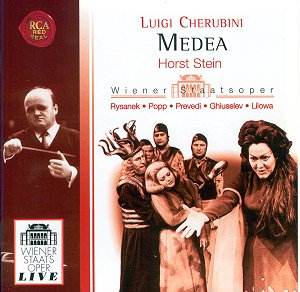 Composer: Anton Bruckner (1824-1896)
Composer: Anton Bruckner (1824-1896)
Works: Symphony No. 5, Symphony No. 9
Performers: North German Radio Symphony Orchestra / Günter Wand
Recording: RCA RED SEAL 74321 845902 [2CDs: 74.01 & 65.07]
Release Date: November 2001
Günter Wand’s interpretations of Anton Bruckner’s symphonies have long been regarded as exemplary, and this reissue of the Fifth and Ninth Symphonies offers further testament to his mastery of the composer’s monumental language. The North German Radio Symphony Orchestra, under Wand’s baton, delivers performances that are both compelling and insightful, revealing the depths of Bruckner’s orchestral palette and spiritual significance.
The Fifth Symphony, recorded during concerts in Hamburg in 1989, presents a robust and urgent narrative—a quality that is immediately apparent in the opening movement. Wand’s approach here is marked by a meticulous attention to structure, with a clear delineation of thematic material that allows the listener to appreciate Bruckner’s architectural genius. The orchestral sound is rich and ample, with a dynamic range that captures the nuances of Bruckner’s writing, particularly in the brass chorales that punctuate the work. While one might argue that Herbert von Karajan’s recordings offer a greater presence, Wand’s interpretation merits attention for its disciplined orchestral ensemble and thoughtful phrasing.
Notably, the Adagio unfolds with a measured gravity, though Wand’s choice to maintain a quicker tempo contrasts with Karajan’s more expansive interpretation. This decision, while perhaps sacrificing some gravitas, ultimately lends a sense of urgency to the movement that aligns with the overall trajectory of the symphony. Wand’s ability to articulate the intricate counterpoint within the Scherzo is particularly commendable, accentuating Bruckner’s subtle orchestral details that might otherwise be overshadowed in a more straightforward interpretation.
Turning to the Ninth Symphony, recorded in the resonant acoustics of Lübeck Cathedral in June 1988, Wand adopts a broader tempo in the first movement, which may initially seem at odds with the inherent drama of the score. This choice, however, allows for a luxuriant exploration of the thematic material, particularly in the majestic brass chorales, which resonate with a compelling richness. While one could contend that this approach diminishes the immediate tension, it is offset by the profound expressiveness that Wand elicits from the orchestra. The Scherzo, characterized by its hammering rhythms, showcases Wand’s ability to convey both power and nuance, particularly in the faster trio section where Bruckner’s tempo indications are honored.
The long, meditative Adagio emerges as a testament to Bruckner’s introspective spirit, encapsulating what the composer himself described as a “farewell to life.” Wand’s interpretation here is particularly poignant, revealing a long-term vision that allows the listener to traverse the emotional landscape of the movement with profound clarity. The absence of a completed finale is felt, yet Wand’s performance encapsulates the symphonic journey, leaving the audience with a resonating sense of closure.
Both recordings benefit from well-balanced engineering that captures the orchestral textures without overwhelming the listener. The clarity of the instrumental lines and the spaciousness of the soundstage enhance the experience, particularly in the symphonic climaxes where the dynamic contrasts are most pronounced. However, one must note that the accompanying documentation is regrettably sparse, lacking the depth necessary to contextualize these notable performances fully.
Historically, Bruckner’s Fifth and Ninth Symphonies occupy pivotal positions within the symphonic canon. The Fifth, completed in 1876, emerged during a period of intense personal and artistic development for Bruckner, while the Ninth, left unfinished at the time of his death in 1896, reflects the composer’s contemplations on mortality and spiritual transcendence. Wand’s interpretations thus serve as both an homage to Bruckner’s legacy and a compelling exploration of his symphonic vision.
In conclusion, this two-disc set of Bruckner’s Fifth and Ninth Symphonies under Günter Wand stands as a significant contribution to the ongoing dialogue surrounding these monumental works. While one may debate specific interpretative choices against the backdrop of other notable recordings, the richness of orchestral sound and Wand’s authoritative grasp of Bruckner’s architectural prowess make these performances essential listening for both aficionados and newcomers alike.


